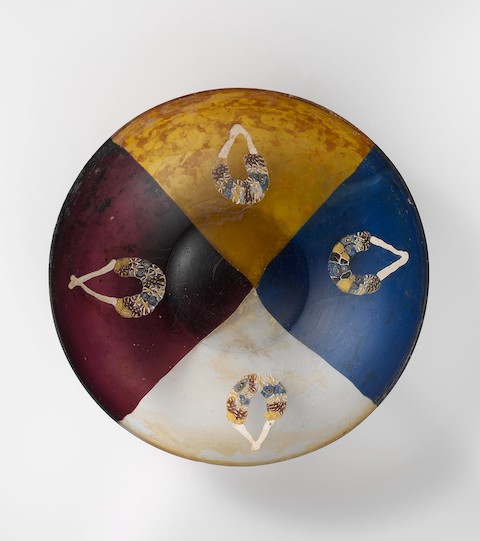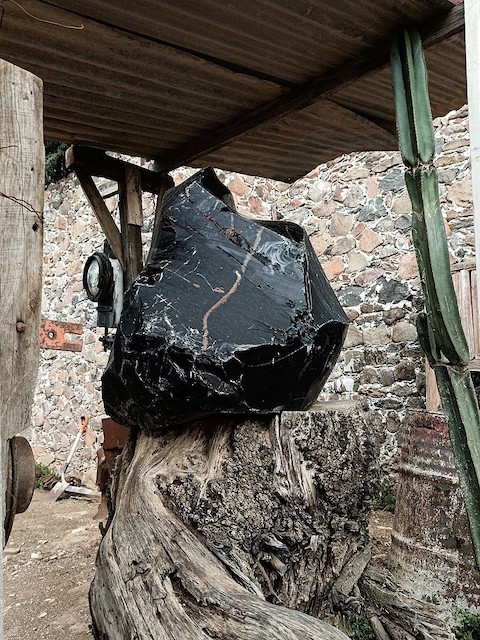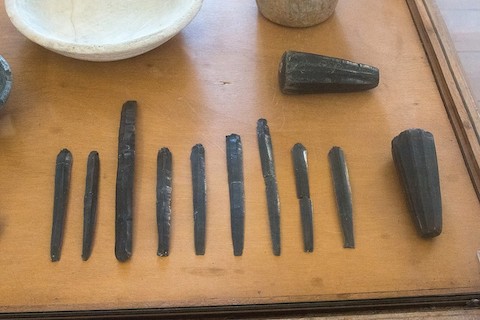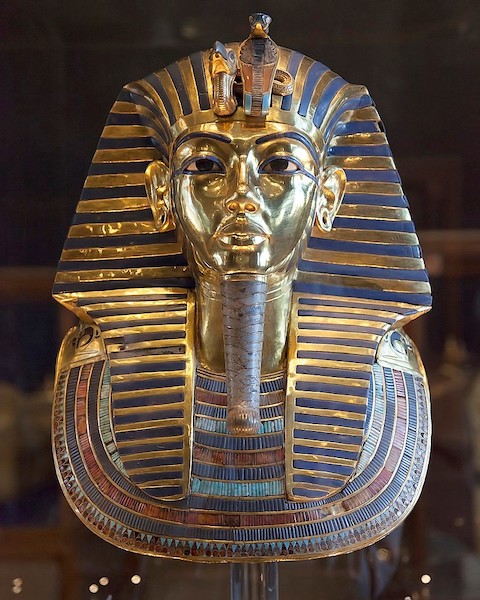
Microscopes, telescopes and lenses. Smartphones, laptops and televisions. Mirrors, windshields and cathedral windows.
None would be possible without glass.
It’s made of silicon dioxide, or quartz, that’s melted and then cooled so fast that crystals can’t form, which gives glass its most important quality today: transparency.
But glass was first valued for the way it breaks. Early humans found naturally occurring glass— from volcanoes or when a meteor superheated desert sand—and used its broken shards to cut things or make weapons.
Not too much later, humans learned to melt sand to make glass. They added metal salts to make different colored glass for jewelry and to adorn metalwork. Soon, different cultures were blowing glass to make colored plates and vessels.
But it wasn’t until the industrial age that glass assumed today’s roles. Transparent, inert, sanitary, and weatherproof, glass made windowpanes, bottles and jars, chemical beakers and electrical insulators. Each year, its uses expanded.
Using complex manufacturing and exotic additives, modern glass can withstand bullets or atmospheric reentry; form supersharp microscopic blades; make fibers that can be woven into building insulation; and so much more.
Clearly, our lives would be pretty dull without glass.
Background
Synopsis: Glass is so common in our daily lives that we tend to take it for granted. It’s mostly silicon dioxide, like quartz, but it forms naturally when molten material cools so fast that minerals don’t have time to crystallize. Glass breaks into curved slivers that early humans used as tools and weapons. Later civilizations learned to color glass for decoration, while today’s civilizations have become dependent on its transparency for many practical items of our modern lifestyles.
- Glass is an amorphous solid that is formed by rapid quenching of molten material. It lacks crystals so is not a mineral.
- The highly ordered crystalline structure of minerals requires time for crystals to nucleate and grow as molten material cools.
- Both natural and manufactured glasses are amorphous solids because their molecules are disorganized, having frozen in place before they could form crystals. The lack of crystal faces causes the transparency of glass.

- Glass occurs in nature when rocks are heated past their melting point then cool rapidly.
- Volcanic obsidian glass forms when lava cools rapidly. It usually has a similar composition to granite but the melt never got the chance to make the familiar crystals found in granites.
- Meteoric impacts and airbursts form impact glass in many global locations such as the Atacama Desert, where a 47 mi (75 km) swath is covered with twisted shards of 12,000-year-old glass formed from desert sands and containing minerals that require temperatures of more than 3000oF to form.
- Of the 500 million lightning flashes that occur on earth each year, 25% hit the ground, where they can form glass fulgurites if they strike sand deposits. We talked about the importance of these to early life on Earth in ED-234.
- Glass also forms in wildfires, including those witnessed by early man.

- Natural glasses, like obsidian, are not stable on Earth’s surface, so over time they devitrify as molecules organize into tiny opaque crystals, especially in the presence of water.
- It is rare to find obsidian in rocks more than 20 million years old, but some partially devitrified samples were found in rocks that are more than 400 million years old.
- Early humans probably discovered natural glass as they foraged and put it to good use.
- Undisturbed glass can survive long periods of burial and is useful to scientists.
- Earliest uses of glass may have been decorative, but humans were quick to take advantage of the conchoidal fracture of glass to create sharp tools and weapons by chipping them with other stones in a process known as knapping.
- Glass tools were common in Neolithic cultures across Europe and the Near East.

- The earliest manmade glass is likely to have been in the form of beads that formed accidentally in a metalworking or pottery glazing fire.
- The earliest crafted glass artifacts have been dated to 700,000 BC and were found near the current home of the Maasai tribe in Kenya.
- Archaeologists have documented Middle Eastern glassmaking cultures from at least 5,600 years ago.
- Artisans formed practical vessels like bottles, jars, bowls, vases and cups from the easily manipulated material, with production really taking off in the Late Bronze Age (1600–1200 BC).
- Craftsmen soon learned that inclusions of different metal salts created different glass colors that became popular for decoration and adornment.
- Adding cobalt makes blue, chromium makes green, nickel makes purple, and gold makes red.
- Colorful glass is thought to have ranked alongside precious stones and just below silver and gold in value during the Bronze Age.
- By unearthing glassmaking hearths and shipwrecks and by assessing local mineral availability to source the salts necessary for rare colors, researchers determined that some places specialized in certain colors and that colored glass was widely traded among artisans.
- Colored glass created beauty in an otherwise dismal colorscape for millennia and was incorporated into breathtaking stained glass windows in cathedrals.

- Modern manufactured glass is mostly silicon dioxide that is produced when very clean sands are melted and then cooled rapidly to produce practical, utilitarian products by a variety of processes.
- Industrial glassmaking takes advantage of the optical properties (light refraction, reflection and transmission) of glass to make lenses, prisms and electronics, including fiberoptic cables.
- Soda-lime glass incorporates sodium, calcium and aluminum to produce a recyclable, chemically stable glass used in bottles and jars. It doesn’t devitrify as easily as natural glasses.
- Borosilicate glasses (like Pyrex) incorporate boron, lowering their coefficient of thermal expansion to make them ideal for kitchenware and labware.
- Glass also serves as an insulating material in finely spun glass wool and as a tough building material in fiberglass, a glass fiber reinforced plastic.

